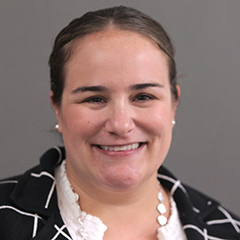This blog is part of our Medicaid Access and Managed Care Rules for HCBS series, which examines the implications of the new rules on home and community-based programs and provides states with suggestions to improve data, quality reporting, and oversight.
The Centers for Medicare & Medicaid Services’ (CMS’s) final rule for Ensuring Access to Medicaid Services (Access Rule) requires states to meet new standardization and reporting requirements for how home and community-based services (HCBS) are delivered to more than 7 million Medicaid beneficiaries under Section 1915(c) waiver programs; Section 1915 (i), (j), and (k) state plan options; and Section 1115 demonstrations.
We’ve already covered a few ways that states should begin thinking about responding to the new Access Rule and managed care rules. Now is the time to focus on cleaning their HCBS program data.
The new HCBS reporting requirements draw on individual enrollment and service utilization data for Medicaid beneficiaries in these programs. This means state Medicaid Management Information Systems (MMIS) and their standardized federal counterpart—the Transformed Medicaid Statistical Information System (T-MSIS)—will be key to achieving the Access Rule’s goals for understanding current access and quality to make meaningful improvements. These goals can be met only if state MMIS and T-MSIS data are valid and usable.
For Access Rule reporting, state MMIS and T-MSIS data have two main uses:
- Calculating HCBS Quality Measures MLTSS/LTSS-6, -7, and -8. These measures examine whether people using HCBS go on to be admitted to long-term care institutions (MLTSS/LTSS-6) and if people living in these institutions for a short stay (MLTSS/LTSS-7) or long stay (MLTSS/LTSS-8) can successfully move back to the community.
- Identifying Medicaid beneficiaries enrolled in qualifying HCBS programs. States may use these data to construct representative samples for several reporting requirements, including experience-of-care surveys, measures of comprehensive assessment and care planning (MLTSS/LTSS-1, -2, -3, and -4), and required reporting for person-centered service plans.
It’s now time to review whether state MMISs and T-MSIS have accurate, complete data about enrollment in covered HCBS programs, and work to resolve discrepancies before required reporting begins. The 38 states with active grants for Money Follows the Person demonstrations must report on MLTSS/LTSS-1, -2, -6, -7, and -8 and experience-of-care surveys for major HCBS populations in 2026 (for services delivered in calendar year 2025), and all states must report beginning in 2028 (for services delivered in 2027). Although states may opt for CMS to calculate and report MTLSS/LTSS-6, -7, and -8 on their behalf, using T-MSIS, states must still address any missing or invalid data. Furthermore, taking the time to understand the data underlying these measures will help states prepare their quality improvement plans, which are also required under the Access Rule.
Although there is no required standard approach to identifying Medicaid beneficiaries enrolled in qualified HCBS programs, CMS’s DQ Atlas offers a starting point for states that want to spring-clean their HCBS data. A brief developed for the Atlas, along with a companion brief for ASPE, describe how to identify HCBS service categories and enrollment in specific HCBS programs. The DQ Atlas also provides an Excel workbook for the code set used to identify HCBS claims. These resources can help states identify, understand, and resolve differences in waiver program enrollment counts from the MMIS and T-MSIS versus other validated sources, such as CMS Form 372 reporting for Section 1915(c) waivers or annual surveys of HCBS enrollment. Correcting any errors now can prevent time-consuming corrections or invalid results in the future.
Imersis—a tool developed by Mathematica and New Wave—can also help states test the impact of their data cleaning on the same data quality measures and validation rules that CMS uses in the T-MSIS data quality Outcomes-Based Assessment, including measures specific to HCBS reporting.
States might prefer to focus on spring-cleaning the HCBS enrollment, claims, and encounter data in their local MMIS, but we strongly encourage coordinating with the team responsible for submitting T-MSIS data to CMS. T-MSIS is the mechanism through which CMS and researchers learn about the experiences of Medicaid beneficiaries using HCBS. For this reason, T-MSIS data are important not only for Access Rule reporting but for understanding how LTSS systems are delivering on the promise of greater choice and community integration.






